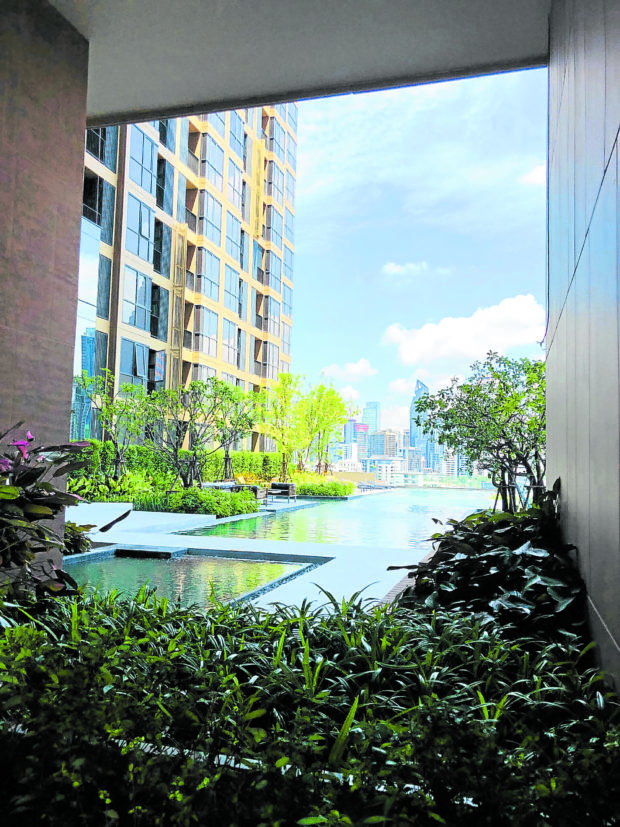
Office buildings designed with outdoor amenities like roof decks and gardens take well-being into consideration.
The importance of health and environmental awareness is becoming widely recognized, and offices are finding more and more ways to give back to the environment.
What exactly is sustainability?
In architecture, sustainability seeks to address the negative social and environmental impact of the built environment by choosing design methods, energy, materials and other resources that will not harm the surrounding ecosystem and communities for current and future generations.
A sustainable office space is balanced
Energy can neither be created nor destroyed. However, it can be transferred into one form or another. This is one of the driving principles of sustainable design, wherein saving and producing energy are key elements.
Designers can incorporate rooftop solar panels as well as semi-transparent photovoltaic units to replace conventional windows, especially in office buildings where power supply is critical. Small-scale wind turbines can also be placed on suitable sites to generate additional electricity.
Apart from a reduced energy dependence, individual employees should also have similar attitudes that can cut their need for transport. Filinvest City, with offices strategically placed alongside various establishments, is ideal for reducing reliance on vehicles, which can eventually help reduce greenhouse gas emissions.
A sustainable office space is freeing
Full-height atriums, which allow waste air to rise through heat exchangers, are a common feature of many sustainable buildings. With more efficient natural ventilation systems, atriums also promote maximum solar gain and reduce the need for artificial lighting—the latter being one of the most used office space utilities.
Office building designers may use glass or any variety of glazed partitions that allow natural lighting to disperse throughout the space to achieve privacy while maintaining the overall lightness and airiness of the space. Electrochromic glass, which is an extremely thin type of glass with coatings that can change from clear to dark, is also ideal. It not only eliminates the need for shades and window coverings due to its tint-shifting nature, but it can also cool warm air.
A sustainable office space is a responsible workplace
A sustainable office space should prioritize not only energy production and conservation, but also human experience and well-being.
To begin, designers should prioritize materials sourced locally, particularly those found near the construction site. Not only will this significantly reduce, if not eliminate, shipping costs, but it will also empower local artisans and highly skilled craftsmen.
Office furniture, equipment and other accessories should be carefully selected and should be reclaimed, recycled or recyclable, refurbished and environmentally friendly. For instance, water can be conserved by installing water-efficient toilets and urinals, touch or push faucets, and even special fittings that adjust the flow and schedule of water.
With a future-oriented approach to sustainable design, office buildings as well as other establishments that generate a significant amount of waste should manage it in a low-impact manner. Examples include rain and gray water harvesting for garden beds, food waste composting and toilet composting for reduced water and sewage usage.
Sustainable offices of the future
Due to the alarming change in the global climate and the depletion of the world’s non-renewable energy resources, what was once a clear vision of the future centered on technology is now associated with sustainability. Recognizing our limited resources and acting on them, particularly in high-consumption establishments such as office spaces, can make a significant difference when done collectively.
The author is the principal architect at Fulgar Architects, which specializes in creating one-of-a-kind and extraordinary design solutions for a variety of property types, including hotels, condominiums, museums, commercial, and mixed-use township developments. To learn more about new architectural designs, please visit www.fulgararchitects.com